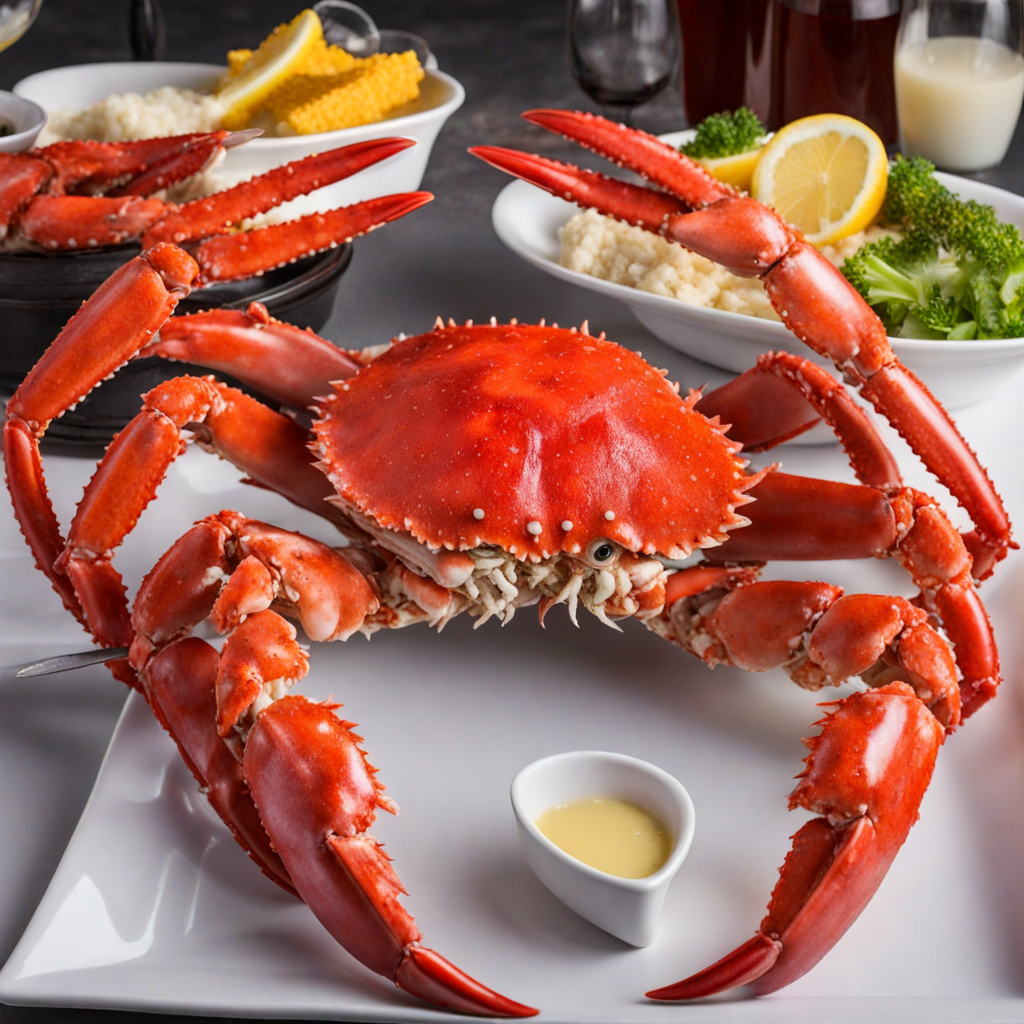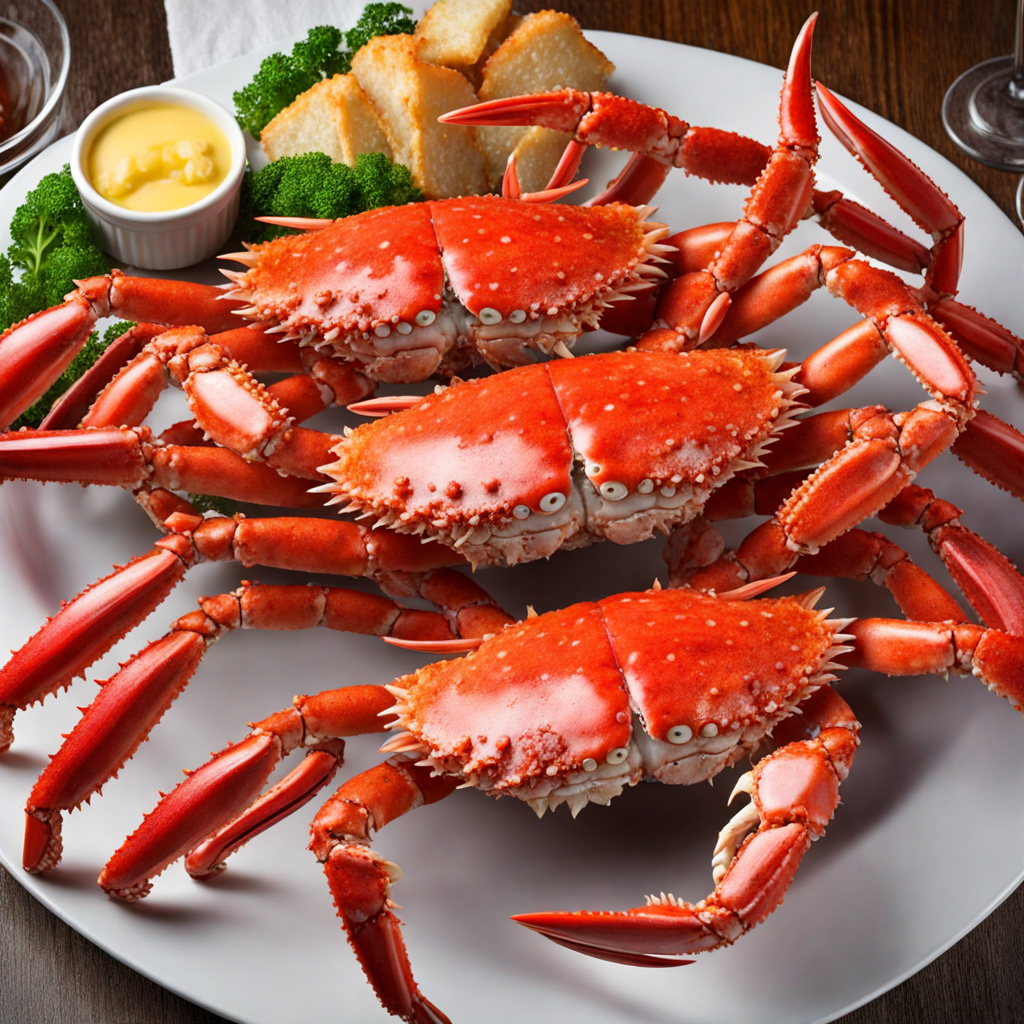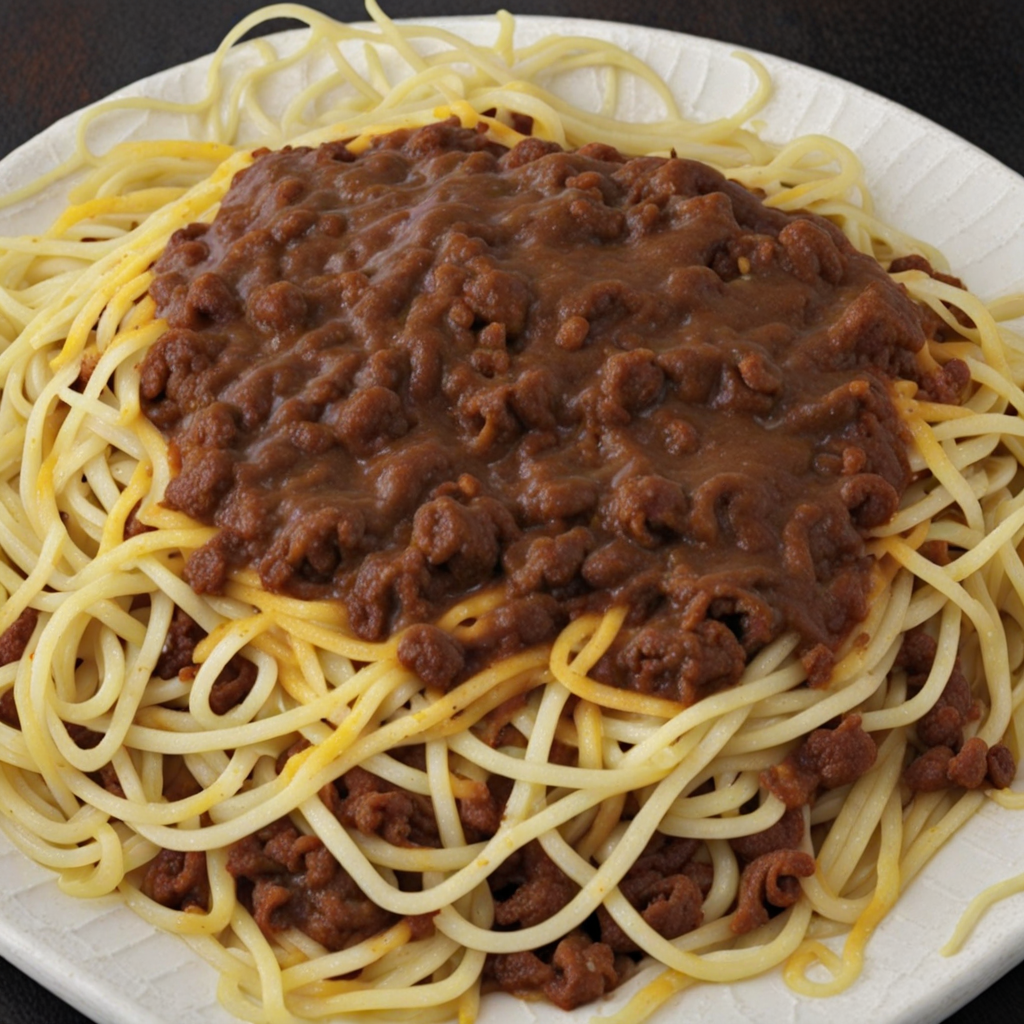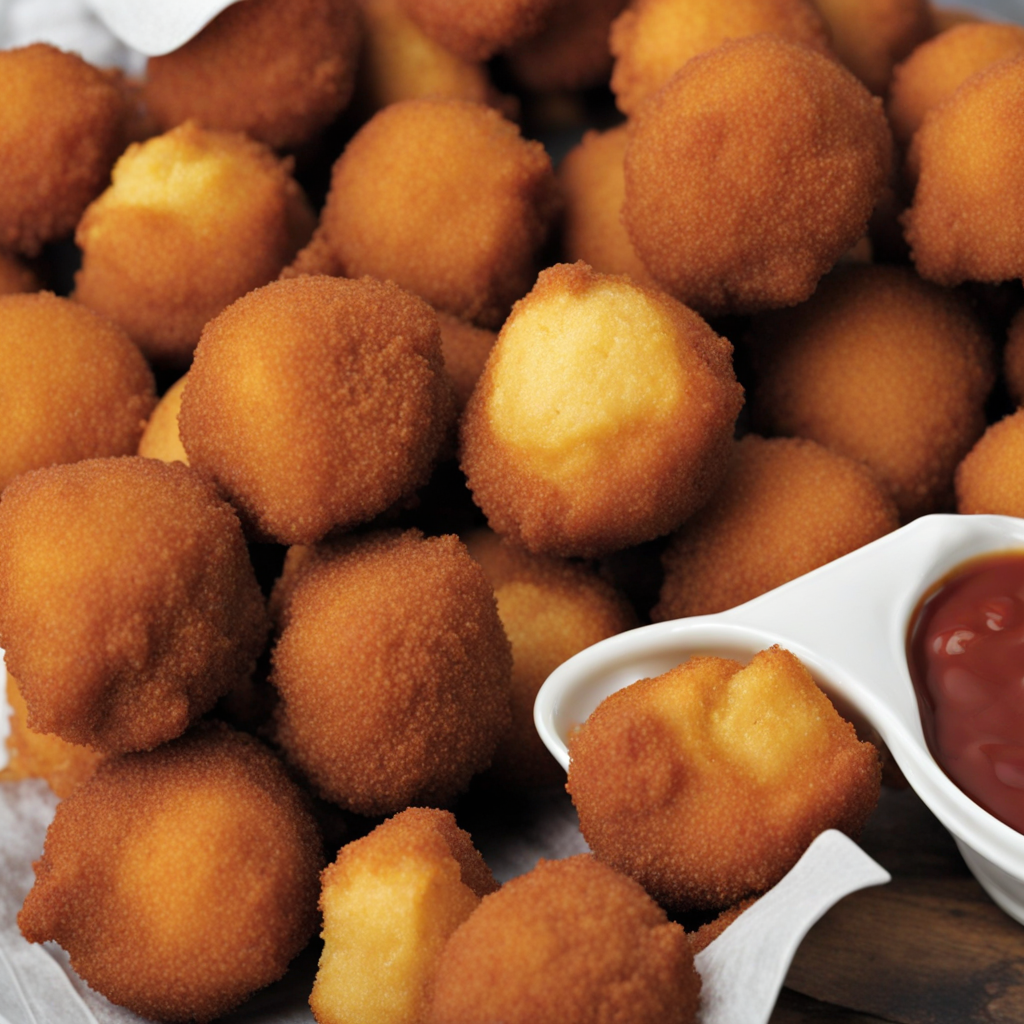Alaskan King Crab
Alaskan King Crab is a true delicacy that hails from the frigid waters of the Bering Sea. Known for its impressive size, with some crabs weighing up to 24 pounds, this seafood marvel boasts a rich, sweet flavor that is both succulent and tender. The meat, found in the legs and claws, is the star of the dish, exhibiting a delicate, flaky texture that melts in your mouth. When cooked, the crab's shell takes on a vibrant reddish-orange hue, signaling the deliciousness within. It is typically steamed or boiled, enhancing its natural flavors while ensuring the meat remains moist and juicy. When it comes to serving Alaskan King Crab, simplicity is often key to highlight its exquisite taste. Many enjoy it with a side of melted butter, which complements the crab's sweetness without overpowering it. A sprinkle of lemon juice or a dash of garlic can elevate the dish further, adding a refreshing zest or aromatic depth. Whether served at a fancy seafood restaurant or enjoyed at home, the experience of cracking open the shell to access the tender meat is as enjoyable as the taste itself. This seafood delicacy can be prepared in various ways, making it versatile for any culinary adventure. From classic crab boils and elegant crab cakes to innovative sushi rolls and tantalizing pastas, Alaskan King Crab fits seamlessly into numerous cuisines. Each bite offers a taste of the ocean, transporting diners to the pristine waters of Alaska. It's a dish that not only satisfies the palate but also invites a sense of occasion, perfect for celebrations or simply treating oneself to something extraordinary.
How It Became This Dish
The History of Alaskan King Crab: A Culinary Marvel #### Origins and Habitat Alaskan King Crab, scientifically known as *Paralithodes camtschaticus*, is a species of crab native to the northern Pacific Ocean. This crustacean primarily thrives in the cold, nutrient-rich waters of the Bering Sea, particularly around the Aleutian Islands and the coasts of Alaska, Russia, and Japan. The species was first documented by Western scientists in the late 19th century, but indigenous populations of the region had known of its existence and culinary potential for centuries prior. The Aleut and other Native American tribes in Alaska have integrated King Crab into their subsistence lifestyles, often utilizing the crab in traditional feasts and celebrations. The harvesting of crabs was not only a source of food but also an important part of community gatherings, emphasizing the cultural significance of this resource in local traditions. #### Rise to Prominence The commercial popularity of Alaskan King Crab began in the 1940s, coinciding with the post-World War II boom in the seafood industry. As demand for seafood surged in the United States and beyond, fishermen began to exploit the rich waters of the Bering Sea. The commercial fishery for King Crab truly took off in the 1960s, thanks to advancements in fishing technology and methods, including the use of larger vessels and more efficient traps. During this time, the crab became a symbol of prosperity and abundance in American cuisine. The advent of television and the rise of culinary shows in the mid-20th century contributed to this phenomenon, as audiences became enamored with the idea of gourmet seafood dishes featuring King Crab legs. The crab’s sweet, succulent meat complemented by rich butter became a staple in fine dining establishments across the nation, establishing it as a luxury food item. #### Cultural Significance Alaskan King Crab has transcended its role as merely a food item; it has become a cultural icon of the Alaskan fishing industry and maritime heritage. The crab is celebrated annually in various festivals, with events such as the Kodiak Crab Festival showcasing the vibrant fishing community of Alaska. These festivals not only honor the crab but also promote local businesses and foster a sense of community. Moreover, King Crab is an integral part of the Alaskan identity, symbolizing the state’s rugged landscape and rich natural resources. The crabbing industry has supported countless families and communities in Alaska, allowing them to maintain their way of life while contributing to the broader American economy. Fishing for King Crab is not just a job; it’s a tradition passed down through generations, featuring stories of adventure, hardship, and triumph. #### Environmental Considerations and Sustainability As the popularity of Alaskan King Crab grew, so too did concerns about overfishing and environmental sustainability. By the 1980s, the fishery faced significant challenges, leading to the implementation of strict regulations to protect crab populations and their habitat. The North Pacific Fishery Management Council, in cooperation with the National Marine Fisheries Service, established quotas, seasonal restrictions, and size limits to ensure the long-term viability of the crab population. These conservation efforts have led to a resurgence in King Crab numbers, and today, many fisheries are considered sustainable. Initiatives such as the Marine Stewardship Council certification help consumers make informed choices, encouraging the support of responsibly harvested seafood. This growing awareness has transformed the eating habits of many, pushing for a more ethical relationship with the ocean's bounty. #### Culinary Evolution In the culinary landscape, Alaskan King Crab has evolved from a traditional food source for Indigenous peoples to a mainstay in gourmet cuisine. The crab is celebrated for its sweet, tender meat, which can be enjoyed in a myriad of preparations. Its versatility has made it a favorite among chefs, who use it in everything from classic dishes like crab cakes and bisques to innovative creations such as sushi rolls and crab tacos. In the late 20th century, the crab became a centerpiece in upscale seafood buffets and fine dining restaurants, often served steamed or boiled with drawn butter, lemon, or garlic. The popularity of King Crab has also influenced its representation in pop culture, appearing in numerous food shows and competitions, where chefs showcase their creativity and skill in preparing this prized crustacean. #### Contemporary Significance Today, Alaskan King Crab remains one of the most sought-after seafood delicacies in the United States and around the world. It is a staple on holiday tables, often featured in festive meals during Thanksgiving and Christmas. The crab's striking appearance, with its long legs and vibrant color, adds a touch of elegance to any dining experience. Moreover, the advent of online seafood markets has revolutionized the way consumers access King Crab. With the ability to purchase fresh crab directly from Alaskan fisheries and have it delivered to their doorsteps, the delicacy has become more accessible than ever. This shift has allowed for a wider demographic to experience the flavors of Alaskan King Crab, expanding its cultural significance beyond the confines of fine dining. #### Conclusion The history of Alaskan King Crab is a rich tapestry woven with threads of tradition, sustainability, and culinary innovation. From its origins as a vital resource for Indigenous peoples to its status as a luxury food item, the crab reflects the complex relationship humans have with the ocean and its bounty. As we continue to navigate the challenges of modern fishing practices and environmental conservation, the story of Alaskan King Crab serves as a reminder of the importance of respecting nature while celebrating its gifts. Whether enjoyed in a fine dining setting or at a family gathering, Alaskan King Crab remains a testament to the enduring connection between food, culture, and community in the United States.
You may like
Discover local flavors from United States







